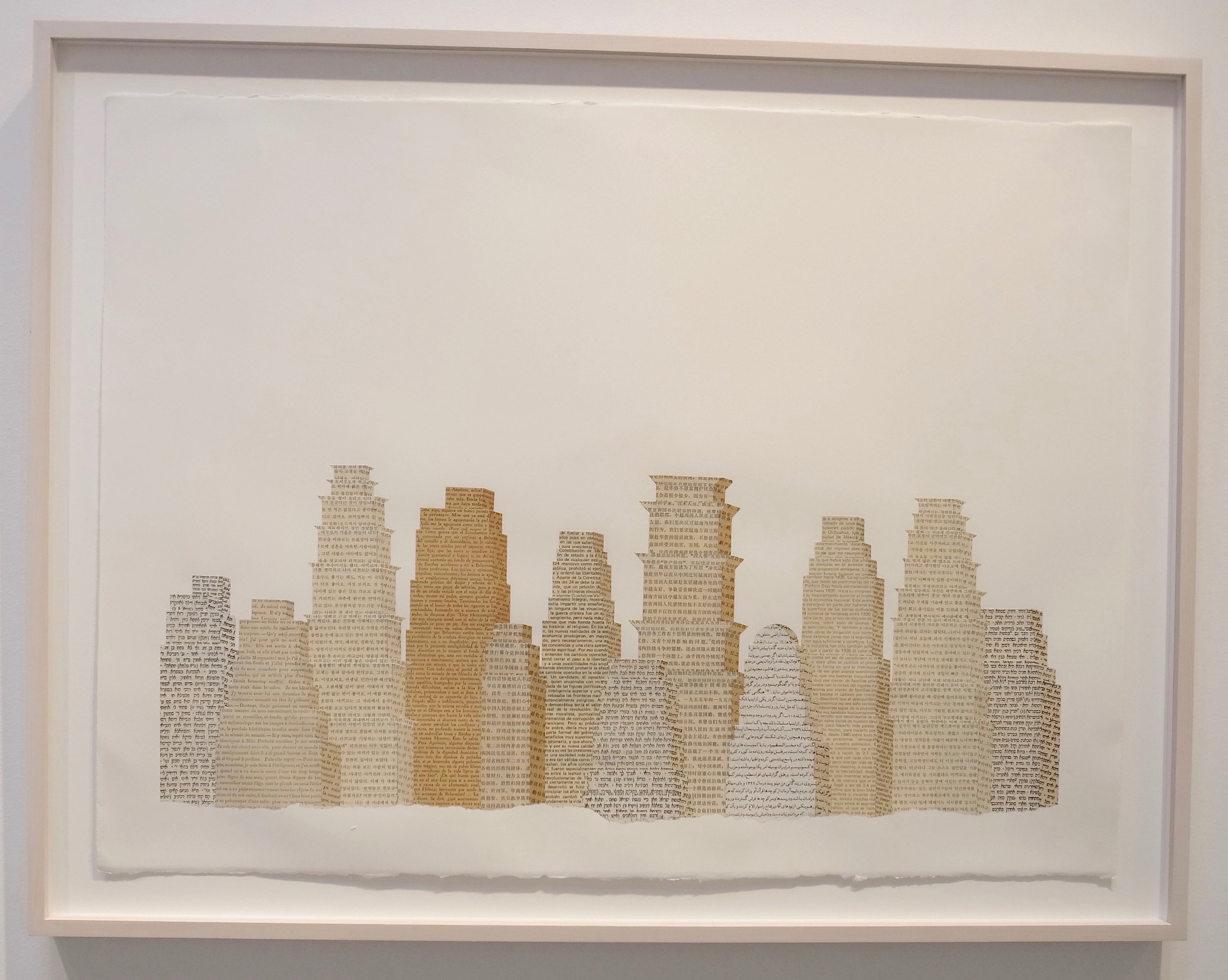During the course of my visit to the Bay Area, I had a chance to make several outings to museums and galleries in Oakland and San Francisco. Through a number of exhibitions, I was inspired by a variety of techniques that I could incorporate into my studio practice. Some of the techniques are familiar ones to me, but have taken on new possibilities in my Memory Walks or Daily Drawings.
Looking at making more complex and layered Memory Walks and Daily Drawings, the first source of inspiration was found in the new SFMOMA (well, relatively new) where I took in my first exhibition - Robert Rauschenberg's "Erasing the Lines". In this exhibition, I saw his 34 transfer drawings corresponding to each canto of Dante's Inferno for the very first time.
From the Rauschenberg Foundation website
His use of transfer technique reminded me of this tried but true process. And I see possibilities for incorporating everyday ephemera into my Memory Walks and possibly my Daily Drawings.
On the First Friday of January, I headed out on a cold and rainy night to my first Oakland Art Murmur in several years. The weather created a subdued environment which was a nice way to ease back into the event. During the course of event, I came up a couple exhibitions which helped me reframe my studio practice.
The first was a three person exhibition "Moderna" at Slate Contemporary featuring Maya Kabat, Maura Segal, and Lola.
From the Artsy website
The combination of these three artists reminded me of why I was draw to art in the first place - it is visual candy and a treat for the eyes and mind. That is what I saw when I saw my first Wassily Kandinsky and it was a nice reminder for me to think of my work in terms of the visual as well as the conceptual.
I headed next to Manna Gallery and discovered the beautiful mixed media works of Karen Gallagher Iverson that incorporated printmaking and encaustic techniques.
Her works were a gorgeous combination of contemporary and traditional techniques. Again, the layered aspect of her works opened up possibilities for my two projects.
During my visit to Minnesota Street Project in the Dogpatch neighbourhood of San Francisco, layers and collage caught my eyes at Jack Fischer Gallery. My visit coincided with a group exhibition which included the collages by John Hundt.
The other was a text-based collage by Kevin B. Chen.
See these pieces again reminded me of my previous foray into collages which I was making on a semi-daily basis more than six years ago. The one is from February 2012.
The possibilities are quite intriguing to take what I have learned over the last six years and revisit this technique with my two projects.
And finally, my visit to Themes and Projects to see the work of Seiko Tachibana opened up ways to use repeated elements with printmaking.
From the Themes and Projects website:
"For our winter exhibition, Themes+Projects gallery presents “Fractal” new paintings by Seiko Tachibana. The concept that many small pieces come together to make up a larger whole has been a central theme in Seiko’s artwork. In previous series, she has created works, in which elements functioned like organic building blocks: atoms form a molecule, molecules form a compound, compounds form a cell, cells form an organism, and so on. The marks, lines, shapes, colors, and textures that are the basic language of Seiko’s work form a kind of network structure, a system of interconnected nodes that seem energized by their interaction within the network. In the interdependence, the synergy, and the flow of meaning and significance within these networks, there is subtle and profound beauty."
It is precisely this use of elements that serve as building blocks as well as mark making and shape as language that I have always been drawn to. Matthew Ritchie, Mark Lombardi, Julie Mehretu are amongst those and adding Seiko Tachibana to this list.
For those of you who have been following my blog binge fest, I would also add Hiroshi Suzuki's systemic use of dots as another process that I can incorporate into my projects.
So in the end there is layering, collage, elements, networks, transfers, and visuality which can be incorporated into my studio practice. There has probably been enough time pontificating this week and about time to "make"!







